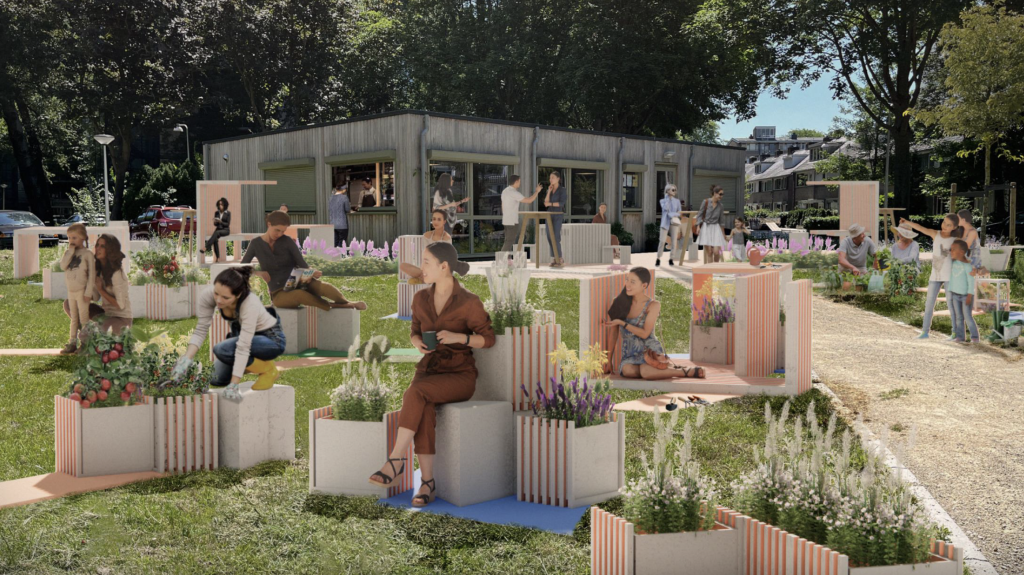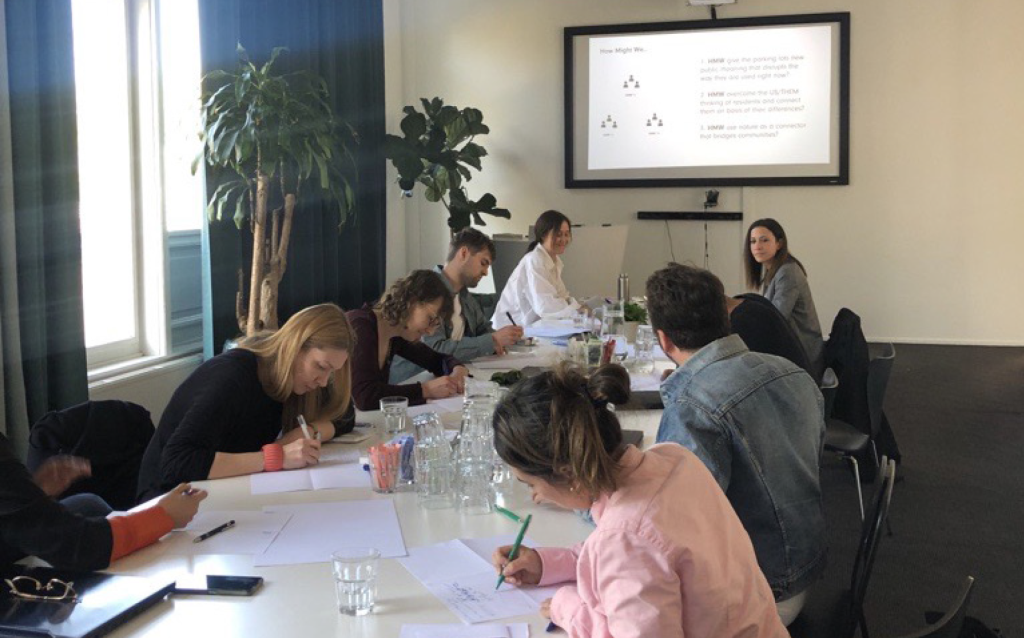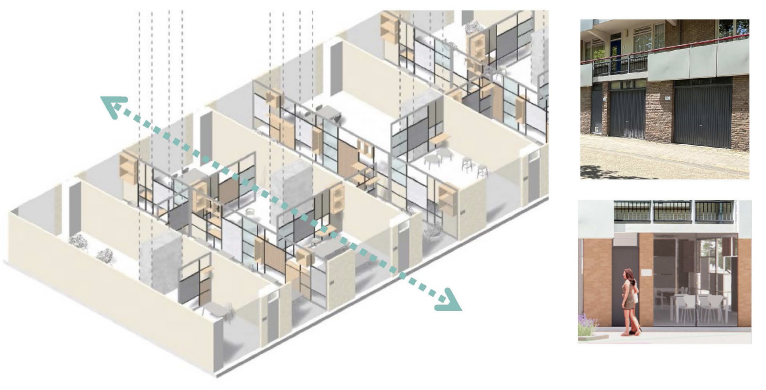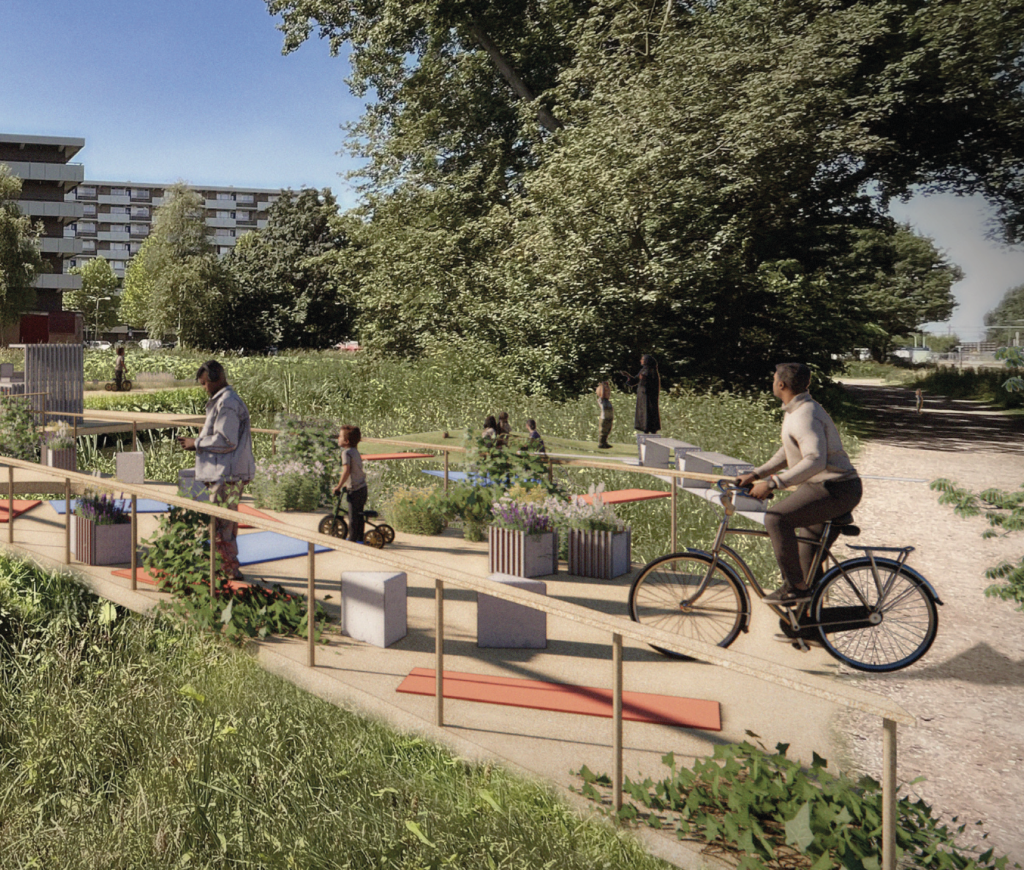
In this design case, UNStudio’s experience design team, UNSx, responded to the brief provided by the housing association Rochdale for a more resilient neighbourhood in Diemen. The area of interest is located next to the Diemen train station, where Rochdale owns the Rode Kruislaan social housing complex. Residents come from diverse social and cultural backgrounds, different age groups and are at different stages of their lifes; families, children, and students and the elderly are living in close proximity to one another. The ten buildings of Rode Kruislaan are interlinked into a mega-structure with a strong division of front and backside. On the front side, semi-courtyards accommodate playgrounds while the parking lots are on the backside. The area is surrounded by ample green space. Despite its proximity to public transport, the complex is poorly connected to the rest of Diemen. Criminal activity in and around the complex is a pressing issue and fuels feelings of insecurity among residents. Complaints about littering have also been raised. The maze-like internal connections of the complex, the multiple entrances and exits, and the lack of social control on the backside are some of the spatial challenges that aggravate the situation. In this context, UNSx was called to develop a design proposal that responds to the social and spatial challenges raised by Rochdale while using and appropriating the Design Framework for Neighbourhood Resilience provided by the AUAS research team.
A sensemaking workshop led by AUAS researchers introduced UNSx to the Design Framework for Neighbourhood Resilience, suggesting a new perspective to take into consideration in their design process. The researchers followed the entire process as embedded researchers. They observed how the framework was used, valued and appropriated by UNSx and they occasionally asked questions to spark reflection, conversation and critique. UNSx followed a three-phase design process and invited professionals with diverse expertise to contribute at different stages. During the first phase, UNSx carried out desk research and site visits to ground their project in a clear understanding of the site, and listen to the voices of local residents. The first phase culminated in defining three ‘impact goals’ together with Rochdale and HvA researchers. The impact goals guided the subsequent parts of the process. In the second phase UNSx organized ideation workshops with Rochdale, colleagues from different departments, and the AUAS researchers. In the final phase, the three strongest ideas from the second phase were combined, iterated, and elaborated. The proficiency of UNSx in designing user experience and the different fields of expertise present in the design team, such as computational designers, product designers, creative strategists and architects, contributed to addressing both social and spatial challenges that the brief contained. The result is a provisional concept design that invites further inquiry and experimentation toward a more resilient Rode Kruislaan. See design proposal report by UNSx.
Download below a report about this design case.


